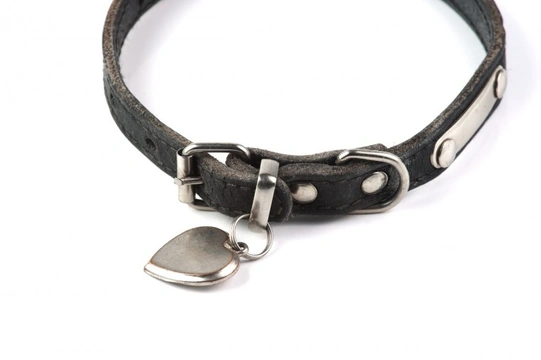
Eight ways to make sure your dog’s collar doesn’t bother them
Your dog’s collar should never bother them or cause them discomfort or distress, and if it fits properly and is right for the job, your dog should never even realise or care that they’re wearing a collar at all.
This article will tell you eight ways to make sure that your dog’s collar does its job and doesn’t bother your dog. Read on to learn more.
Don’t attach your dog’s lead to their collar
First of all, dogs with a reasonably sturdy neck and balanced conformation and that do not pull on or lunge on the lead – and that you never lead-check or pull in your turn – can walk safely and comfortably with their lead attached to their collar.
However, most dogs pull to a small extent or might lunge at something like a cat in the hedge, which places a sudden and acute pressure on the dog’s neck if their lead attaches to a collar. Also, brachycephalic dogs like the pug and French bulldog should never have any pressure placed on their necks as this can have an acute impact on their breathing.
One way then to make sure your dog’s collar doesn’t bother them or risk their health is to use their collar just to hold their ID, and attach their lead to a harness instead.
Pay some mind to the collar tags
Your dog’s ID itself as attached to the collar can come in many forms, from hanging tags to a compact barrel to even printing on the collar itself. Even if your dog’s collar doesn’t bother them, make sure their tags do not either; such as by jingling when your dog walks or being too heavy for the dog’s neck.
Check your dog’s collar over regularly for signs of wear or damage
Even the very best quality dog collar will wear out over time, although how long this takes depends on the materials and workmanship of the collar as well as how hard your dog is on their things, and many other factors.
Sometimes you might find that the visible external parts of the collar look totally fine; but if you take the collar off, the inner material could be splitting and cracking, wearing, or otherwise becoming damaged to the point that it might scratch or irritate your dog’s neck.
Take your dog’s collar off them at least once a week and check it over, checking it is still a good fit when you put it back on.
Check your dog’s neck over for signs of chafing, raw spots or problems
Examine your dog’s neck when you check their collar over too, and look for things like sparse or discoloured areas of fur, areas where the collar appears to be leading to fur breakage, grime build-up on your dog’s neck, and any signs of redness, chafing, scaly or dry skin, heat, irritation, or even spots or a rash-like appearance.
Wash or clean your dog’s collar regularly
You should remove and swap your dog’s collar over for a fresh one around once a week, or remove their collar and wash or thoroughly clean it before you put it back on them.
Even if your dog’s collar looks clean from the side of it you can see, much like shirt collars on shirts that are only ever put on when you’re fresh out of the shower and the shirt itself is clean, the inside of your dog’s collar gets a significant build-up of grime and dead skin from regular wear.
Don’t use flea collars on your dog
Flea collars for dogs are a bad investment for two reasons. The first is that they’re not at all effective at treating fleas! The second is that they’re imbued with a chemical agent that is what theoretically kills or repels fleas, and having this in contact with your dog’s neck will potentially irritate their skin and damage their fur.
When your dog is bathed, take their collar off
When you’re bathing your dog or if you take your dog to a dog groomer to be bathed, they will need to be properly secured with collars and leads; but your dog’s own collar that they wear all the time should be removed.
This is firstly because one of the most important parts of your dog to clean when bathing them is under the area where their collar lies as this tends to get grimy, and also to ensure that your dog is not then left in a collar that will still be damp on the underside even if the top appears dry.
Remove and clean/dry your dog’s collar if it gets wet or grubby
Finally, you should remove and clean your dog’s collar regularly as a matter of course as it is apt to get a build-up of grime underneath it. But if your dog’s collar has got wet or mucky by other means (simply being out on a walk) always remove it, clean it, and dry it thoroughly when you get home before putting it back on your (also clean and dry) dog.



